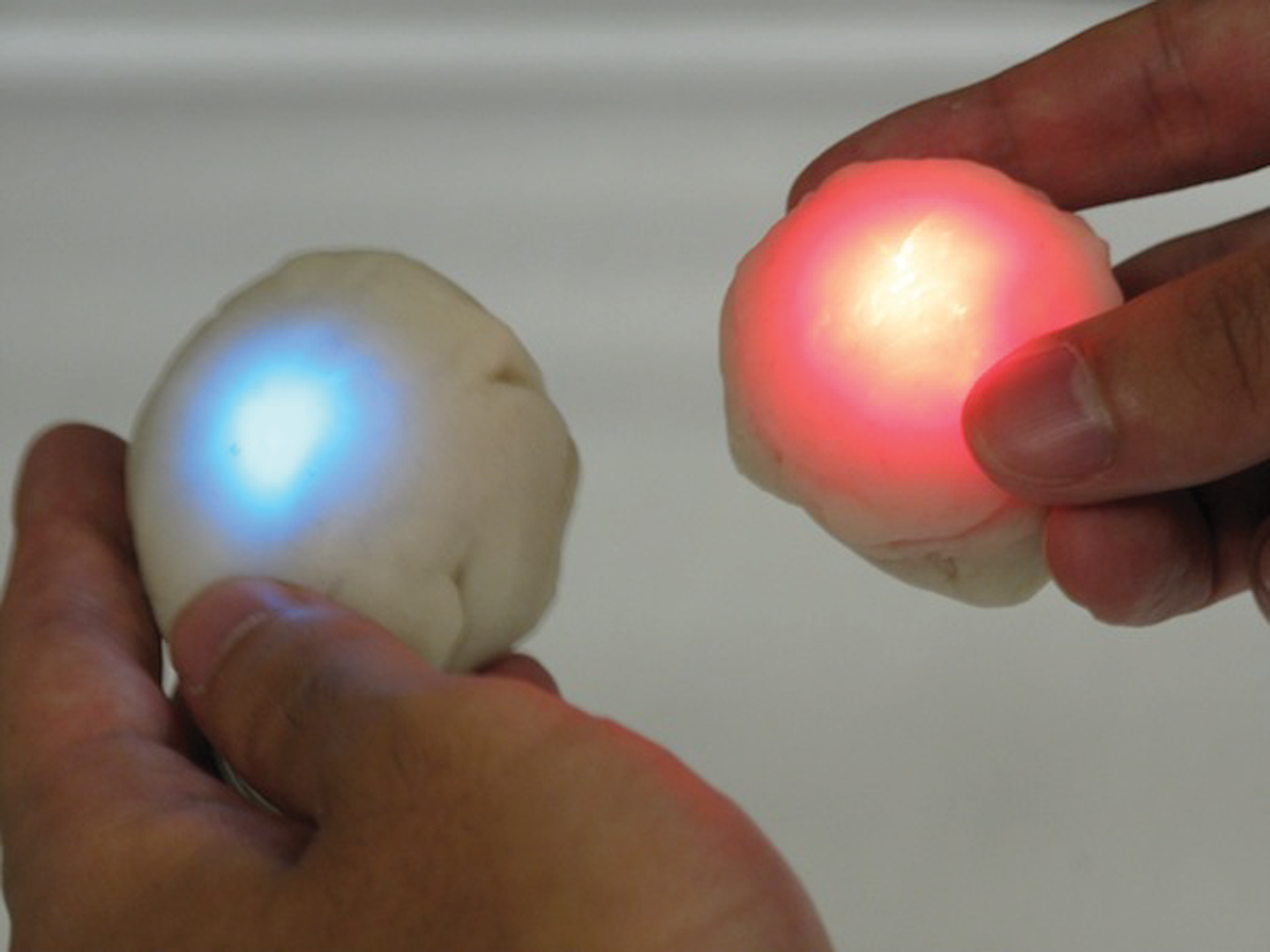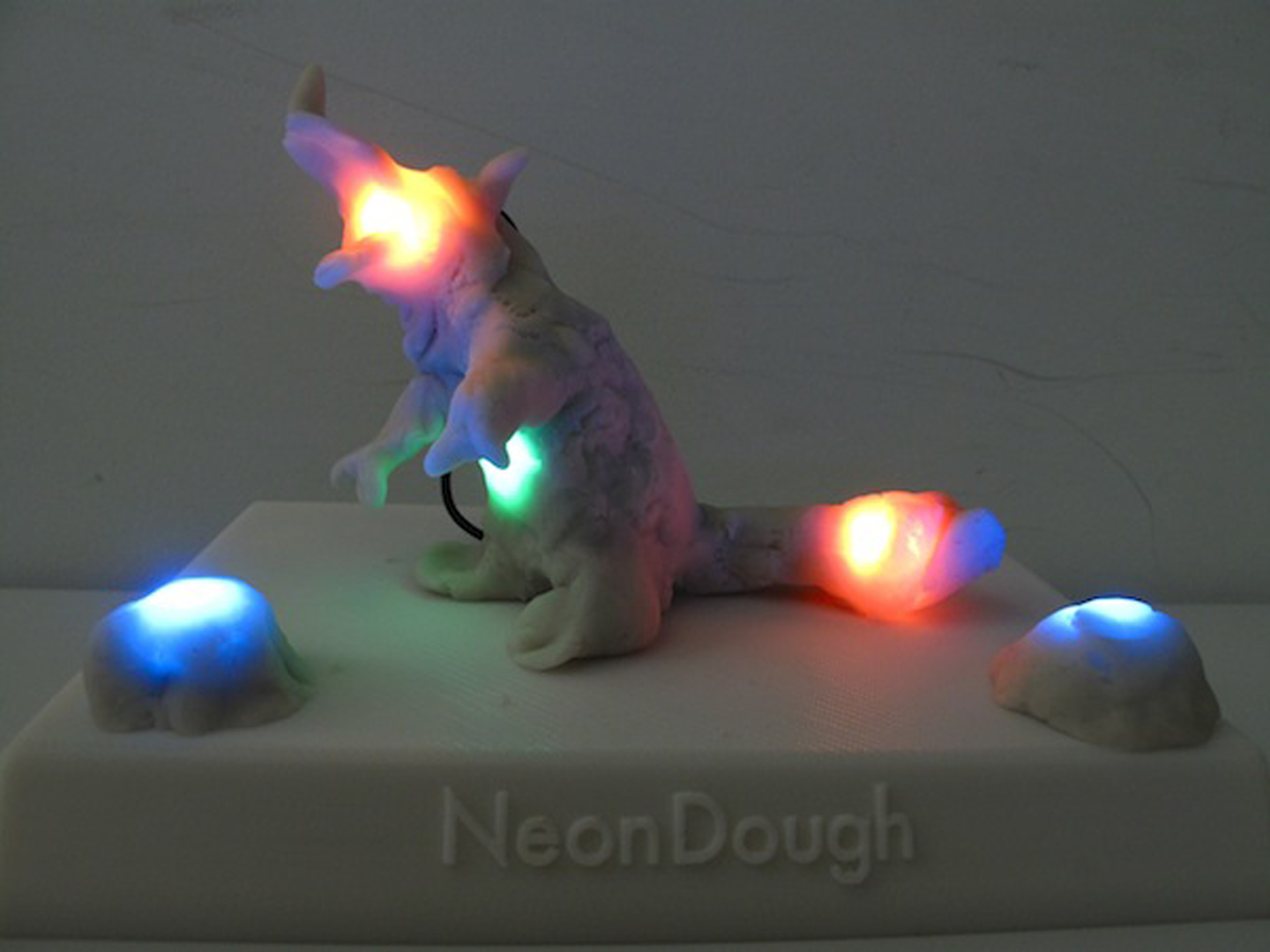“NeonDough: crafting with interactive lighted clay” by Yamaoka and Kakehi
Conference:
Type(s):
Title:
- NeonDough: crafting with interactive lighted clay
Presenter(s)/Author(s):
Abstract:
From childhood, we often play with clay to learn and enjoy formative design. In clay crafting, we believe that color arrangement on the clay is one of the important elements as well as forming shapes. However, since the colors of normal clay are static and it is not easy to change them in contrast to its flexible form. Toward a resolution of this issue, we propose a novel clay interface named NeonDough which is clay crafting with glowing clay. So far, there have been various studies aiming to support creative activities of children using educational toys that contain electronic circuits (e.g. [Raffle et al. 2004]). As one of typical interfaces which focused on clay material, Illuminating Clay [Piper et al. 2002] uses a laser scanner to detect the shape of the clay and projects images onto it according to the input. In this approach, sensors and display devices need to be located at the exterior of the clay. On the other hand, Squishy Circuits [Johnson and Thomas 2010] is a related work of our research that utilizes the electric character of conductive dough. While Squishy Circuits mainly utilized the conductive dough as alternated wires in electronic circuits, our NeonDough works as both input and output tools themselves.
References:
1. Johnson, S., and Thomas, A. P. 2010. Squishy circuits: A tangible medium for electronics education. In CHI EA ’10 Proceedings of the 28th of the international conference extended abstracts on Human factors in computing systems, ACM.
2. Piper, B., Ratti, C., and Ishii, H. 2002. Illuminating clay: a 3-d tangible interface for landscape analysis. In CHI ’02 Proceedings of the SIGCHI conference on Human factors in computing systems: Changing our world, changing ourselves, ACM.
3. Raffle, H. S., Parkes, A. J., and Ishii, H. 2004. Topobo: a constructive assembly system with kinetic memory. In CHI ’04 Proceedings of the SIGCHI conference on Human factors in computing systems, ACM.






